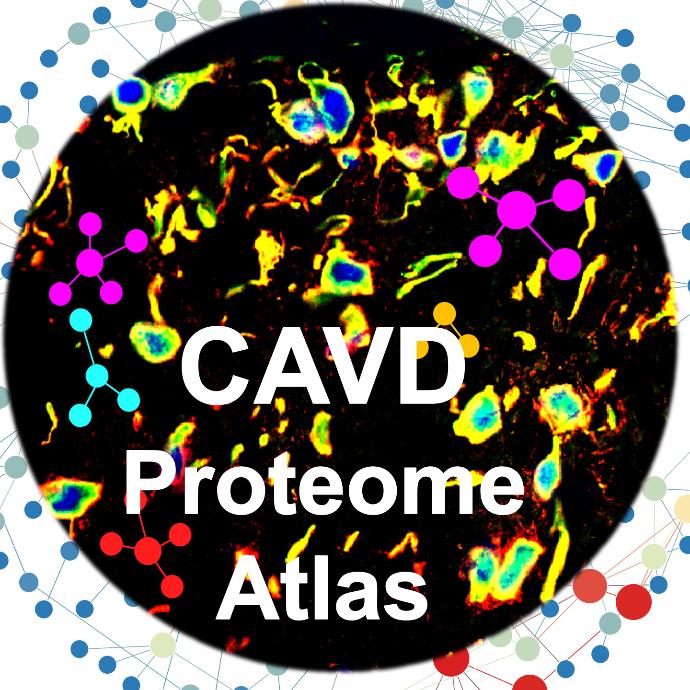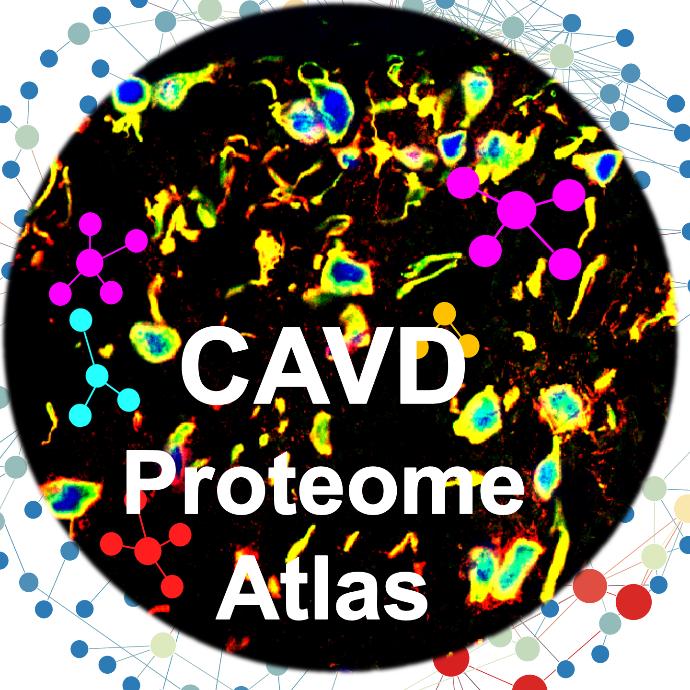
Credit: Elana Aikawa, Brigham and Women's Hospital
Calcific aortic valve disease (CAVD) – a disease that leaves the aortic valve stiff and calcified, preventing blood flow from the heart into the aorta – affects one quarter of the U.S. population aged 65 and over. There is no pharmacological treatment for CAVD. Without an invasive valve replacement surgery, most patients will die within two years of disease onset. CAVD progresses rapidly through multiple, distinct stages of disease, but is general diagnosed late, making it challenging to develop targeted treatments. A team of researchers from BWH has tackled this problem by comprehensively analyzing gene expression and protein distribution in human aortic valves obtained from valve replacement surgery. Their results are published in Circulation.
"Together, our multi-pronged omics assessment of CAVD has led us to a number of new insights into the pathobiology of this poorly understood disease," said senior author Elena Aikawa, MD, PhD, director of the Heart Valve Translational Research Program (HVTRP) at BWH.
By examining tissue from different disease stages within valve samples of the same patient, the researchers were able to avoid donor variation in their analysis. They identified that cells from one of the three distinct layers in an aortic valve leaflet, the lamina fibrosa, had the highest propensity to calcify. The questions of why the lamina fibrosa was prone to calcification, and what the genetic drivers of calcification progression were, remained unknown. The researchers identified proteins underlying the disease states in the lamina fibrosa, and were able to build a molecular network representing the different stages of CAVD.
In addition to building molecular networks for the fibrotic and calcific stages of CAVD, the researchers also determined that CAVD has a prominent inflammatory fingerprint. Inflammatory markers were identified in tissue samples from all disease stages in the aortic valve leaflets.
"We have been able to produce a precise omics-level molecular atlas of the aortic valve and the molecular network of calcific aortic valve disease," said first author Florian Schlotter, MD, a research fellow in the Center for Interdisciplinary Cardiovascular Sciences at BWH. "By identifying key molecular drivers within these networks, we have been able to determine potential therapeutic targets that could help us to develop the first pharmacological therapy for CAVD."
###
This study was funded by a series of grants from the National Institutes of Health and a research grant from Kowa Company, Ltd. (Nagoya, Japan).
Paper cited: Florian Schlotter et al. "Spatiotemporal Multi-omics Mapping Generates a Molecular Atlas of the Aortic Valve and Reveals Networks Driving Disease" Circulation DOI: https://doi.org/10.1161/CIRCULATIONAHA.117.032291
Media Contact
Haley Bridger
[email protected]
617-525-6383
@BrighamWomens
http://www.brighamandwomens.org
Related Journal Article
http://dx.doi.org/10.1161/CIRCULATIONAHA.117.032291





